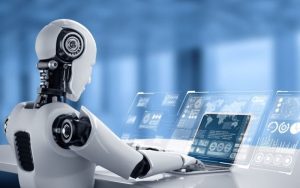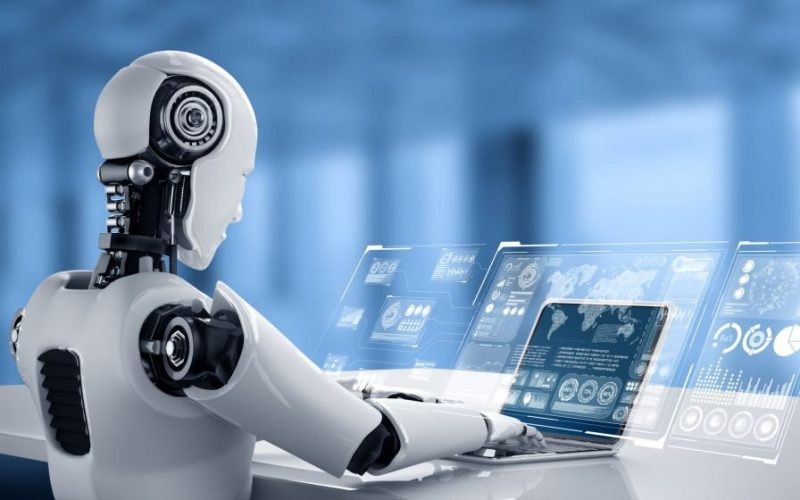Future Of Robotics
Introduction
Robotics is no longer just a concept of science fiction—it is an active, evolving field that continues to reshape how we live, work, and interact with the world. From industrial automation to surgical assistants, robots have firmly planted themselves in various sectors. But what does the future hold? With rapid advancements in artificial intelligence (AI), machine learning, and sensor technology, the future of robotics promises to be even more transformative and exciting. This blog explores what lies ahead for robotics in the coming decades, and how it might influence our daily lives, economy, and society.

1. Smart Robots Powered by AI
One of the most significant driving forces behind the future of robotics is artificial intelligence. In the near future, robots will not only perform programmed tasks but will also learn from experience, make decisions, and adapt to complex environments. Imagine a warehouse robot that can autonomously reorganize inventory or a domestic robot that learns your routine and preferences over time.
AI integration means robots will become more autonomous, context-aware, and efficient. Deep learning will allow them to process vast amounts of data in real-time, recognize objects, understand speech, and even interpret human emotions. This will revolutionize how robots are used in healthcare, education, and customer service.
2. Human-Robot Collaboration in the Workforce
As robots become smarter, their collaboration with humans will become more seamless. The concept of “cobots” or collaborative robots is already gaining traction in industries such as manufacturing, logistics, and even agriculture. These robots work alongside humans, assisting with physically demanding, repetitive, or dangerous tasks, while humans handle the cognitive or creative parts.
In the future, human-robot teams could become the norm across many sectors. For example:
-
In construction, robots could handle heavy lifting while humans focus on planning and precision.
-
In healthcare, robotic assistants could support nurses in hospitals by delivering medication or monitoring patients.
-
In disaster zones, search-and-rescue robots could collaborate with emergency teams to find and assist survivors.
3. Healthcare Revolution
Healthcare is one of the most promising areas for robotics. Surgical robots like the da Vinci system are already enabling more precise, minimally invasive surgeries. Future developments could make robotic surgery even more advanced, allowing remote surgeries through 5G or satellite networks.
Additionally, robotic exoskeletons will aid rehabilitation and mobility for individuals with spinal cord injuries or muscular disorders. Elderly care robots are expected to become more common, especially in aging populations like Japan or parts of Europe, where these machines can help with daily activities, provide companionship, and monitor health.
Robots will also play a major role in pandemic response and medical logistics. During COVID-19, robots were already being used for disinfection, testing, and delivery of medical supplies—a trend that is likely to continue and evolve.
4. Robotics in Everyday Life
As robotic technology becomes cheaper and more accessible, consumer-grade robots will enter our homes. Beyond robotic vacuum cleaners and lawnmowers, we can expect smart domestic assistants that cook, clean, and provide elder care. Personal robots could become as common as smartphones today.
With advancements in natural language processing, future home robots could understand and hold conversations, recognize family members, and perform tasks based on vocal commands or learned preferences.
For example:
-
A kitchen robot might prepare your favorite breakfast at 7:00 AM sharp.
-
A home assistant could monitor security and alert authorities in case of emergencies.
-
A social robot might help children with homework or play interactive educational games.
5. Space Exploration and Robotics
Space is another frontier where robots are set to play a critical role. NASA and other space agencies already use robotic rovers and arms for exploration and repairs. In the coming years, autonomous robots will be crucial in building infrastructure on the Moon or Mars, collecting samples, and supporting astronauts.
Robots can operate in extreme environments that are hostile to humans—intense radiation, low gravity, or toxic atmospheres. Humanoid or spider-like robots could build habitats, harvest resources, or repair satellites, paving the way for sustained human presence in space.
Private companies like SpaceX and Blue Origin may also integrate robotics into their missions, including autonomous cargo delivery or maintenance operations on space stations.
6. Ethical and Social Implications
With all these advancements, the rise of robotics raises important ethical and social questions. Will robots replace human jobs? How do we ensure AI-driven robots behave ethically? Who is responsible if a robot makes a mistake?
Job displacement is a major concern, especially in sectors like manufacturing, transportation, and retail. However, history shows that new technologies often create new jobs even as they eliminate others. Future workers may need to focus on skills that complement automation—like creative thinking, emotional intelligence, and complex problem-solving.
Regulations and ethical frameworks will be essential to guide the development and deployment of robotics. Governments, companies, and researchers must work together to ensure transparency, safety, and accountability.
7. Swarm Robotics and Collective Intelligence
Another exciting area in robotics is swarm robotics. Inspired by nature (like ant colonies or bird flocks), swarm robotics involves many simple robots working together to perform complex tasks. These robots communicate and coordinate in real time, making them useful for search-and-rescue operations, agriculture, and environmental monitoring.
For example:
-
A swarm of drones could be deployed to monitor forest fires or oil spills.
-
Swarm robots could plant crops or detect pests with minimal human supervision.
-
In defense, swarms could be used for surveillance or area scanning in hostile zones.
Swarm intelligence will enable robots to scale operations efficiently, even in unpredictable or hazardous environments.
8. The Future Is Now: Challenges and Opportunities
Despite all the exciting possibilities, several challenges still remain:
-
Battery life and energy efficiency are ongoing issues for mobile robots.
-
Navigating complex, unstructured environments is still difficult for many robots.
-
Public trust and acceptance will be crucial for widespread adoption.
However, these challenges present opportunities for innovation. The combination of robotics with technologies like 5G, edge computing, quantum computing, and the Internet of Things (IoT) will accelerate growth in the field.
Universities, startups, and tech giants are investing heavily in robotics research. Initiatives like self-driving cars, humanoid assistants, and fully automated factories are already underway and will shape the future landscape.
Conclusion
The future of robotics is not just about machines—it’s about creating tools that extend human capabilities, solve real-world problems, and improve quality of life. From healthcare and home assistance to space exploration and smart cities, robots will become an integral part of our ecosystem.
While the road ahead is filled with technical, ethical, and social challenges, the potential of robotics to transform our future is immense. Embracing this change with thoughtful innovation and responsible development will ensure that robotics benefits humanity for generations to come.
